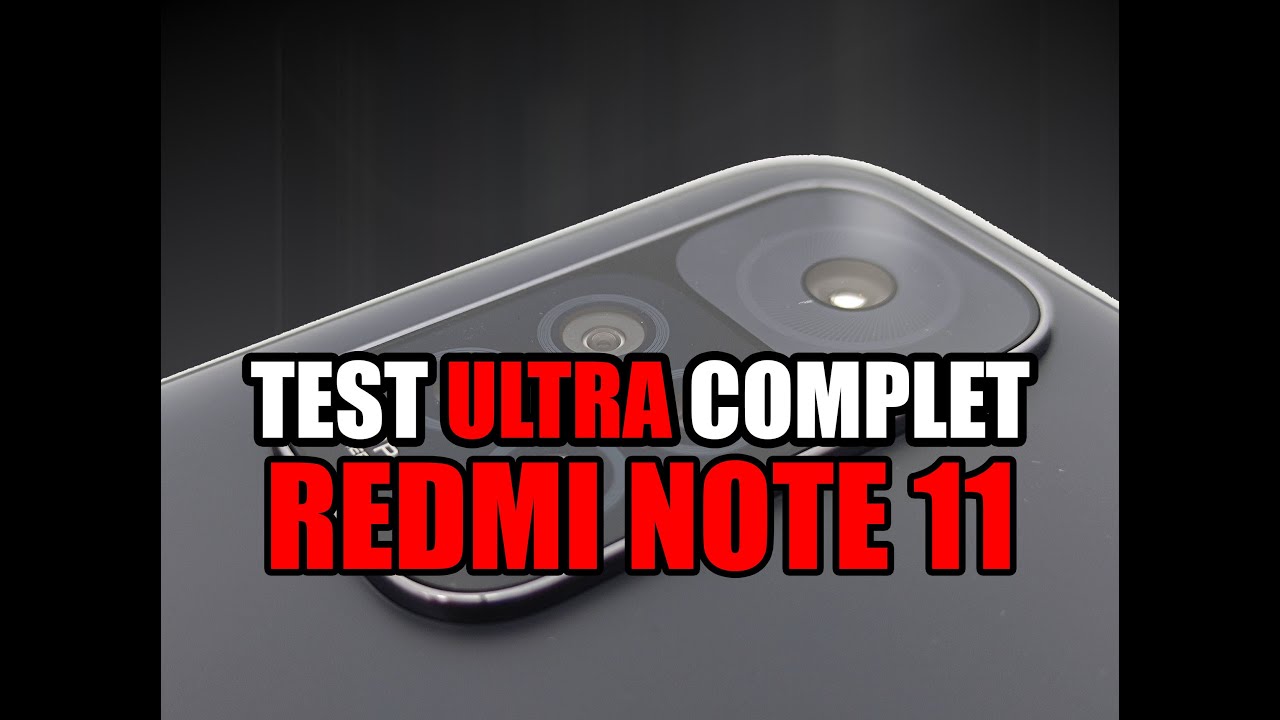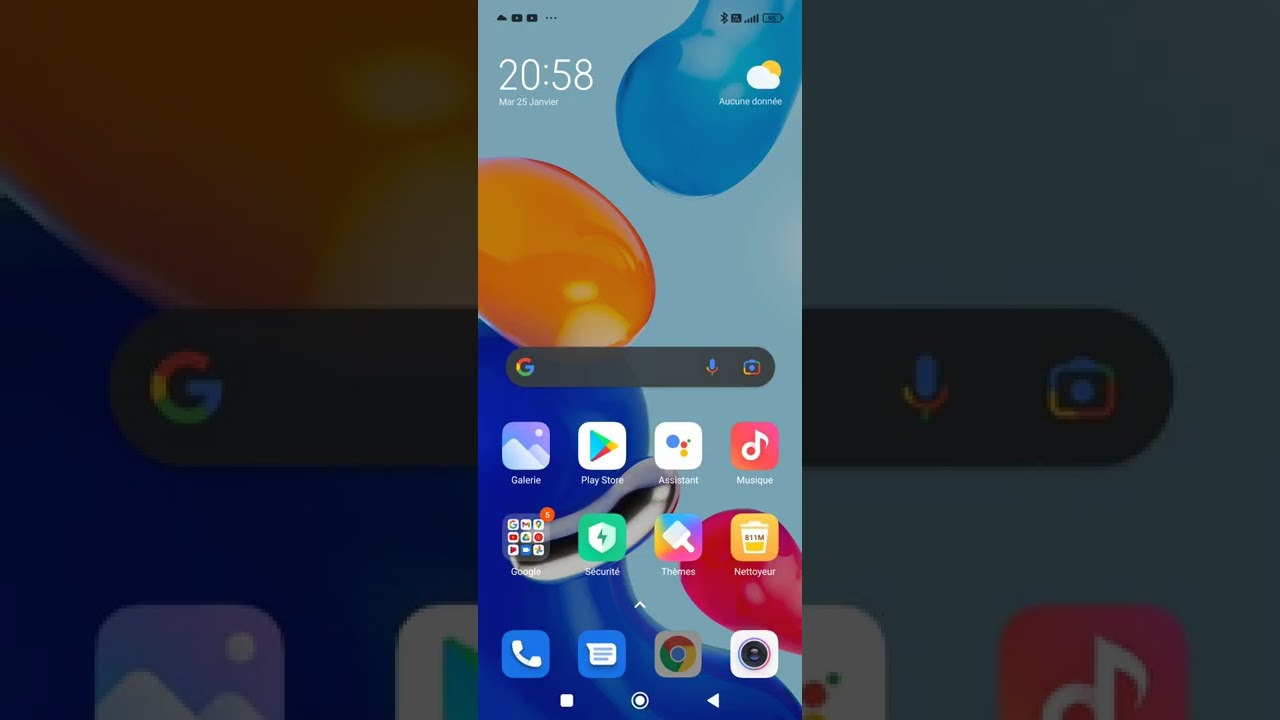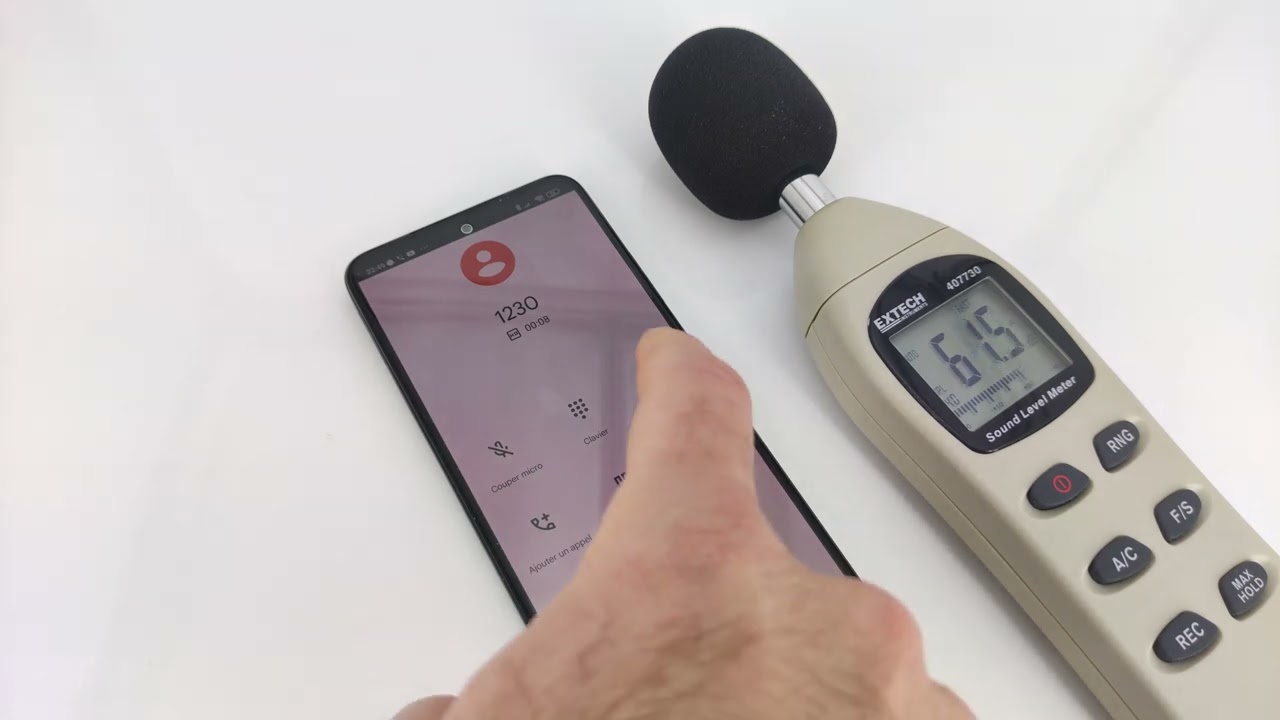Smartphones
Redmi Note 11 : test / review
Published on: 26-01-2022 / Modified: 15-04-2023
I've been testing the Redmi range since the Redmi Note 5, so I've tested a lot of them since that first phone. The Redmi Note range seems to have a cycle where one generation seems like just a slight evolution from the next generation and sometimes the Redmi Note range takes a bigger leap forward. The previous model, the Redmi Note 10, took a big leap forward by setting the bar really high compared to the competition. This Xiaomi Redmi Note 11 should therefore be a slight evolution but a slight evolution is not necessarily a negative thing because Xiaomi has so far always managed to do better than the others with a lower price.
Test video
If you prefer the video format, I made a video which broadly summarizes the content of this test:
Manufacturer web site:
https://www.mi.com
Structure of my tests
I test the phones according to a pre-established structure (see below) to provide you with as much information as possible. Unfortunately, this takes a long time. Some tests like network performance tests take several days and for photo tests I sometimes have to wait until the weather is suitable to take pictures in good conditions. I am therefore obliged to publish the tests step by step, so I invite you to come back if the test is not complete at the time of your visit.Price Redmi Note 11
The list below shows the prices for the Redmi Note 11 from more than 50 sites around the world. If you are not satisfied with any price, you can subscribe to a price alert to be the first to be notified when the price drops.The above links are affiliate links from companies such as Amazon, Gearbest, Aliexpress,... If you appreciate my work, I would be grateful if you could purchase these products through these links. It costs you absolutely nothing but I get a small commission that allows me to buy the material I test. Thank you very much!
Timeline
January 19, 2022: reception of the phone in previewJanuary 26, 2022: official launch of the Redmi Note 11
Why this phone?
I systematically test all Redmi Note because when testing phones, this product range is one of the products that you absolutely have to test. Each generation of Redmi sells millions of copies and sometimes Xiaomi manages to sell a few million copies in a few hours. This is probably also the case for some new Samsung or Apple models, but the huge advantage of the Redmi is the price.Xiaomi has tested many things with the Redmi over time, going from a very basic design to sometimes more fanciful choices like the Redmi Note 9, the Redmi Note 11 rather plays in an elegant sobriety giving itself a mid-range air without blowing up the price. Xiaomi has made technical choices that surprise me a little for this new model and in a global context where a shortage of certain components is driving up prices, the Redmi Note 11 will undoubtedly find its place thanks to its price rather than its novelties from a technical point of view.
Unpacking
First configuration
Setting up a phone is not exciting, often just follow the instructions and in a few minutes at most your phone is ready to use. The first surprise with this phone is to see MIUI 13 appear from the start. This is the first phone running MIUI 13 that I've tested. The configuration of the phone is no different from MIUI 12.5, I didn't really notice any difference, Xiaomi tried to replace all Google screens with a more graphical interface. Xiaomi also goes a step further by trying every time to trick you into using their cloud service and with every generation they find new tricks for you to sign up. It doesn't matter, the Xiaomi cloud is a good product, it's just that I don't need it because I already have a cloud at Google and Amazon.Finish
I find that this Redmi Note 11 has a good level of finish despite the use of plastic, the design is quite sober and elegant. The gray color gives it a more metallic look and its texture gives it a good grip.
Specifications
The information below comes from the Device Info HW application. The application provides detailed technical information about the tested phone. The Redmi Note 11 exists in several versions and the first to be marketed is the Chinese version. The characteristics of the Chinese version are very close to those of the Poco M4 Pro, so I expected to find the same characteristics in this Redmi Note 11 in the global version, but that is not the case at all. I'm also afraid that this will confuse the potential buyer because even if these phones have the same name, they are quite different products. The version I tested is therefore a Redmi Note 11 in global version which runs on a Qualcomm architecture.
The Redmi is equipped with a Snapdragon 680 processor which offers slightly lower entry-level performance than the previous range. Buyers of this kind of product are probably not looking for performance, but taking a step back is not in Xiaomi's habits. This processor is accompanied by an Adreno 610 GPU which is also necessarily at the entry level.
This Qualcomm architecture also includes the use of a Snapdragon X11 modem interface which is limited to 4G and offers a download speed of 390 Mbps (with 150 Mbps upload). I assume that a 5G version will be released later as was the case for the previous generation.
For wifi I find the WCN3990 chip which is also used on higher end models, so wifi performance is probably going to be good.
CPU / GPU Performance
As I described in the previous paragraph, this phone is equipped with a Snapdragon 680 and an Adreno 610. These are entry-level components that have their place in this kind of phone, so do not here look for performance. It is especially the games that will be impacted by this choice because for everyday use, this level of performance is quite sufficient.
Benchmark Antutu/3DMark
I got a score of 233,000 points with Antutu, I got a score of 225,000 points with the previous generation. The gain in performance is therefore not really visible but it is possible that this processor is more energy efficient, this will be seen in the battery tests. This score shows that it is with memory that this model stands out from its predecessor with 67,000 points where I had obtained 48,000 points with the Redmi Note 10.Performance n t has ever been the trump card of the Redmi Note range, those looking for performance in the same price range should look to the Poco brand. This lack of performance is however quite relative because the Redmi Note 11 will perfectly meet the needs of a population looking for a phone that is not too expensive, competitors are not doing better anyway.
The phone's temperature only rose by 2.9°C during the Antutu test, so the processor does not seem to heat up very much and/or the heat dissipation is doing its job properly.
Gaming
To test the performance in game, I download the mobile PUBG game and evaluate the in-game experience, graphics level and depth of vision. This game is quite demanding and should help you evaluating the performance of a phone.Not yet available / tested
Network performance
As I wrote above, this version of the Redmi Note 11 is limited to 4G. There are other versions of this Redmi Note 11, so you must check which one it is before buying. This version uses the code name "2201117TG".Signal 4G (from December 2020)
I decided to change the methodology for measuring the network because I noticed that the configuration of the mobile network changes over time. This makes it more difficult to compare phones because the conditions are no longer exactly the same.
To overcome this problem, I set up a device that captures 24 hours a day about ten parameters from the mobile network (ex: cell id, rssi, rsrq, snr, frequency,...). I then place the phone next to the device for 24 to 48 hours taking the same measurements so that I can compare them.
Overview of the phones tested with this methodology
I measured the sensitivity to the 4G network by performing more than 1200 measurements. I got an excellent signal of -91.32 dBm with the Redmi Note 11 where my probe got an average signal of -92.5 dBm. The difference isn't big but I haven't tested many phones that can do better than the probe, so that's a pretty good result. I'm a bit amazed as this phone probably uses a Snapdragon X11 modem like the Poco M3 Pro and OnePlus Nord N100, I had gotten pretty average results with both of these phones. We see on the following graph that the Redmi dominates the probe on 100% of the measurements.
Download/Upload speed
To test the download speed, I have identified some 4G cells offering good performance where I test all my devices several times to see what download and upload speed they can achieve.
Wifi performance
To test a phone's ability to receive the network properly, I take measurements near my router and then remotely (and always at the same place). This gives me an average in dBm where a value of -90 dBm indicates poorer performance than a value at -30 dBm.Wifi signal
This phone is equipped with a wifi chip that I have tested in other phones that have delivered good results, this is also the case for this phone. I got an average signal of -18dBm near the router and -63dBm at a distance. I also measured the signal stability by putting the phone on my router and I get a signal level below -10dBm (that's an excellent score) and the signal remains perfectly stable.
Download/Upload speed
To test the speed in Wifi, I connect to my router in 2.4Ghz and 5Ghz (if available) and use the Ookla application to measure the speed.
GPS performance
To test the accuracy of the GPS signal, I use two positioning applications to evaluate the difference between the actual position and the position indicated by the phone. This test is done outdoors with nothing to obstruct the signal. An accuracy level of up to 3 meters can easily be corrected by an application (e.g. Google Maps).

Battery range
To test battery life I developed an application that measures the battery level minute by minute until the battery is empty. This application consumes about ten percent of the phone's resources and I do a test with 100 brightness. This test aims to reproduce a contemplative use of a phone (e.g. surfing the internet, reading articles, spending time on social networks). These results are not valid for intensive gaming/streaming use. I measured the charging time with a Ugreen 100W fast charger and it took me 69 minutes to charge the battery from 1 to 100%. The Redmi Note 11's 33W fast charge puts it among the fastest in this price range. On the following graph, we see that the loading speed is not at all linear, it only takes 12 minutes to load 20% but the last 20 percent takes 25 minutes. It is from 80% that the charge slows down sharply.With the screen brightness at 100% I got a battery life of 592 minutes, it's a battery life quite similar to the Poco M4 Pro and Redmi 10 which probably use the same battery. Consumption is fairly linear as can be seen in the following graph.
The autonomy of the Redmi Note 11 is therefore good without being extraordinary, the battery should last 2 days in normal use.
Photo camera test
To test the quality of photos produced by a phone, I do a technical test (resolution, sharpness, chromatic aberration,...) in studio (identical conditions) to evaluate the technical part objectively. From the second half of 2020, I built my own laboratory to take completely objective technical measurements. I then take pictures in real conditions to see how the camera performs. I then evaluate these photos according to my criteria but I publish the photos so that you can evaluate the result according to your criteria.Hardware
This phone is equipped with two Samsung sensors on the back, first there is the 50 million pixel Samsung S5KJN1 which I also find in the Redmi 10 or the Poco M4 Pro. There is also the 13 million pixel Samsung S5K3l6 for the ultra wide angle part and there are still three sensors for depth, portraits and macro (Omnivision and Galaxycore).I tested the main Samsung sensor in two other phones and this type of sensor produces worse photos than the Sony sensor of the Redmi Note 10. The Samsung sensor is probably more compact than the Sony but this comes at the cost of quality. I don't know the ultra wide angle sensor used in this phone, so I'm curious to see what might have motivated Xiaomi to replace the Sony IMX 355 which did a good job in a large majority of their previous models.
Photo quality
Photo quality (indoor/studio)
The studio test is carried out under the same conditions so that the results can be compared on an equal basis. I calibrate my lighting for each test to obtain the same brightness and colour temperature. This test is a preliminary analysis of the technical qualities of a camera. Most phones fail this test, so you should also read the results of the other tests in the following paragraphs.
Main sensor: Samsung S5KJN1
Secondary sensor: Samsung S5K3l6
Photo: technical test
I was inspired by industrial technical tests to create my own technical test to evaluate the technical quality of a camera. This test is an objective assessment of a camera's ability to render a scene correctly.
I test the following elements:
- centre sharpness, peripheral sharpness
- colour fidelity based on 24 reference colours
- level of chromatic aberration
- dynamic range (ability to capture dark and light areas without loss)
- distortion
The technical evaluation may differ from the subjective evaluation as the feeling of a photo will be influenced by the processing provided by each manufacturer.
Main sensor: Samsung S5KJN1
Secondary sensor: Samsung S5K3l6
Outdoor photo quality
Main sensor: Samsung S5KJN1
Here is an example with AI mode:
I cannot say that the quality of the photos produced by this sensor is bad, I just think that the quality has regressed a bit compared to the previous generation which used a Sony sensor. The difference won't be too noticeable if you don't zoom in, the most visible thing is the overabundance of blue.
Secondary sensor: Samsung S5K3l6
Here are some other photos that should allow you to form an opinion on the photo quality delivered by this phone:
Test photo / night
Video quality
Stabilisation

Video normale conditions

Video low light

External audio quality
This test is intended to give you an overview of the volume and sound quality during calls and when listening to music through the external speakers.

Music with external speakers
The Redmi Note 11 produces a fairly fine sound in the treble, bass sounds are lacking on the other hand a bit of depth with the external speakers. The sound produced is a little more powerful than average.
Sound quality during calls
For calls, the Redmi produces a fairly high-pitched sound but allows for clear communication. Listening volume is higher than average. If I switch to loudspeaker mode, the volume is obviously higher and is a little above average, the sound is still high-pitched but not as much as with the main loudspeaker.
Audio quality (headphones)
To test the quality of the phone's audio output, I connect the device's audio output to a measuring tool, then play sounds on all frequencies and measure the differences between the original sound and the sound produced by the phone. In this way I measure the phone's ability to correctly reproduce all sounds.Screen quality
To test the screen, I use a colorimetric probe that measures the color accuracy of a screen, as well as other parameters to see if a screen is able to correctly reproduce an image. I also test the brightness level to determine if the screen will be able to display an image in full sunlight.Colorimetry
Brightness / Contrast
The contrast of the Redmi is almost infinite because it uses a good amoled screen, this gives excellent depth to the image. The brightness is around 400 cd/m² without assistance and if you use the sun mode, the brightness will be strong enough to read the screen under the sun. However, I noticed a high reflectivity of the screen (mirror effect).
Biometry
The fingerprint sensor is located on the ignition button, this sensor works very well and is quite fast. 2D facial recognition is also available, in principle it should work better under MIUI 13 but I did not notice a difference.Operating system
The Redmi Note 11 is the first phone I've tested running MIUI 13, most phones from this brand I've tested recently were running MIUI 12.5.
What's new?
- performance improvement (+15% according to Xiaomi)
- new live wallpapers
- improved multitasking
- new features to protect your data
- new fonts
- document watermarking
- new widgets with extended compatibility for tablets running MIUI
Encoutered bugs
Not yet available / testedAccessories Redmi Note 11
Compare Redmi Note 11 with the others
Test / Review conclusion
Redmi has so far always managed to dominate the competition in the entry level by marketing complete phones at an affordable price and therefore before writing the conclusion for this new model, I asked myself the question of what the competition could offer for an equivalent price... At Samsung, nothing. At Apple, nothing. At Huawei, nothing. At Oppo, nothing. I could go on like this with most major brands. Obviously all these brands market phones capable of competing with the Redmi Note 11, they even produce many models that do better but are more expensive each time. Redmi's biggest competitor is Redmi/Xiaomi/Poco!
I really liked the Redmi Note 10, it was for me by far the best phone around 200€. So I was wondering if this new model was going to do even better and my answer is yes for certain criteria and no for other criteria. The Redmi Note 11 stands out on the level of finish a little better than the previous model, a slightly better calibrated screen, better network sensitivity, better wifi sensitivity, slightly higher performance. The differences with the previous model are not gigantic but they are very real.
It's in the photo where I find that the Redmi Note 10 is doing better, the "old" Sony sensor that was already used 3 years ago produces sharper photos and fairer than this new model where I have too much blue accentuation and less sharpness than the previous model. This does not weaken the Redmi Note 11 too much compared to other brands but I note a regression compared to the previous model
Will this Redmi Note 11 be a success? Most likely because even if the difference with the previous model is not gigantic, it brings some discreet improvements allowing the range to evolve while keeping a lead on the competition.
offer
Xiaomi has decided to hit hard with this new Redmi Note 11 by launching it at a price of 159$. At this price, you won't find anything better. Quantities are limited so hurry up!
Limited offer: Redmi Note 11 from $159
The launch of the Redmi Note 11 is accompanied by the launch of the Redmi Note 11s with also an introductory offer: Redmi Note 11s from €229
Limited offer: Redmi Note 11 from $159
The launch of the Redmi Note 11 is accompanied by the launch of the Redmi Note 11s with also an introductory offer: Redmi Note 11s from €229
Strengths
- excellent screen (colorimetry, contrast, brightness, 90hz,...)
- good sensitivity to the 4G network and wifi
- good listening volume for calls
- good price/performance ratio
- battery charging speed
Weaknesses
- colorimetry of photos
- sharpness of videos (1080p limitation)
- lack of depth of sound through loudspeaker
Alternatives to this product
Not yet available / tested
 LAURENT WILLEN
LAURENT WILLENHead of myself on this blog
I share my passions on my blog in my free time since 2006, I prefer that to watching nonsense on TV or on social networks. I work alone, I am undoubtedly one of the last survivors of the world of blogs and personal sites.
My speciality? Digital in all its forms. I have spent the last 25 years working for multinationals where I managed digital teams and generated revenues of over €500 million per year. I have expertise in telecoms, media, aviation, travel and tourism.










































Questions/Comments